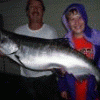-
Posts
2,832 -
Joined
-
Last visited

EdB replied to Sea Eagle's topic in Michigan Waters Fishing Reports - Salmon and Trout


EdB replied to Aaron Nusbaum's topic in Michigan Waters Fishing Reports - Salmon and Trout


EdB replied to Yanker's topic in Classifieds - Buy, Sell, Trade or Rent

EdB replied to Yanker's topic in Classifieds - Buy, Sell, Trade or Rent

EdB replied to johnlund2100's topic in Michigan Waters Fishing Reports - Salmon and Trout

EdB replied to Bobr's topic in Michigan Waters Fishing Reports - Salmon and Trout

EdB replied to dan agnello's topic in Michigan Waters Fishing Reports - Salmon and Trout

EdB replied to Dennis hageman's topic in Michigan Waters Fishing Reports - Salmon and Trout

EdB replied to Aquaholic's topic in Michigan Waters Fishing Reports - Salmon and Trout

EdB posted a topic in Classifieds - Buy, Sell, Trade or Rent



EdB replied to farfrumwurken's topic in Michigan Waters Fishing Reports - Salmon and Trout

EdB replied to dan agnello's topic in Michigan Waters Fishing Reports - Salmon and Trout

